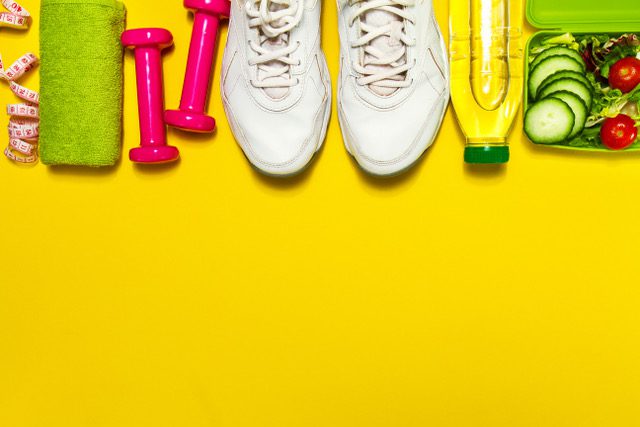Your body needs calcium as much as it needs exercise
When it comes to living a healthy lifestyle, exercise doesn’t go it alone. Nutrition is an equally important part of any fitness program no matter what the goal. For women over 50, it’s especially important to strike the right balance between the energy spent on exercise and the food you take in for nutrition. And don’t think you can stop reading here because of all those nutritional supplements you take. You might be doing it wrong! More about that in a few sentences.
First, let’s take a look at Mineral #1 on the Over 50 Hit Parade: calcium. Did you know that 99 percent of the calcium in your body sits in your bones and teeth? True enough. Given that, it’s not hard to see why the human body requires calcium more than any other mineral. Your bones are pretty important.
Bones reach their maximum strength and density—or peak bone mass—around age 30. Loss of bone mass after that age is inevitable, and for postmenopausal women, bone loss can be rapid. Furthermore, our bodies don’t produce calcium. We get it from foods like yogurt, milk, and cheese. (And you get the same amount whether it’s full fat or non-fat, if you’re worried about that.) If you’re body isn’t getting enough calcium from food, it borrows from your bones for use in other parts of your body. If you don’t “pay back” that lost calcium, your bones can become weaker and you put yourself at greater risk for osteoporosis.
Regular exercise can also help combat loss of bone mass for women and men age 30 and over. Weight-bearing exercises that force you to work against gravity are especially good for your bones. Walking, hiking, jogging, climbing stairs, tennis, dancing, and weight training are all bone-friendly.
The right dose at the right time
So, are calcium supplements a good alternative to a yogurt smoothie? Yes, but only if you’re taking the supplement correctly. Calcium is most efficiently absorbed by your body when it’s included with real foods in a process called synergy. Simply put, calcium (and other minerals) works better in your body when combined with other natural minerals and vitamins (vitamin D, in particular) all working together in your food, and your body. That’s synergy.
Calcium supplements have no such synergy. They work alone and don’t absorb into your body as readily or naturally as calcium with food. That doesn’t mean calcium supplements are worthless. On the contrary. If your regular diet isn’t getting your calcium levels where they need to be, consider a supplement taken at doses of 500 mg at a time. No more. Your body can’t absorb more than 500 mg at once. If you’re trying to add 1500 mg of calcium a day through one daily dose of supplements, you’re wasting 1000 mg (a mistake I made once). Break it into three 500 mg doses daily (if you need to take that much).
So how much calcium do you need?
Here’s what the National osteoporosis foundation recommends for women:
- Age 19 to 49: 1,000 mg
- Age 50 and over: 1,200 mg
- Postmenopausal: 1,200 – 1,500 mg
This, of course, assumes all body systems are normal. Your doctor may have other plans for you if your calcium levels are off. Regardless, before you consider a calcium supplement, it’s important to understand how much calcium you’re getting from your normal diet. To give you an idea, here’s a sampling of food sources with calcium:
- Plain low-fat yogurt (1 cup)………………..448 mg
- Skim milk (1 cup)……………………………..324 mg
- Mozzarella cheese (15 ounces)……………310 mg
- Orange juice, calcium fortified (1 cup)…300 mg
See the Guide to Calcium-Rich Foods at the National Osteoporosis Foundation, or pick up my Body Electric book for more ideas.
So once you finish your work out, go ahead and treat yourself to that low-fat yogurt smoothie.

